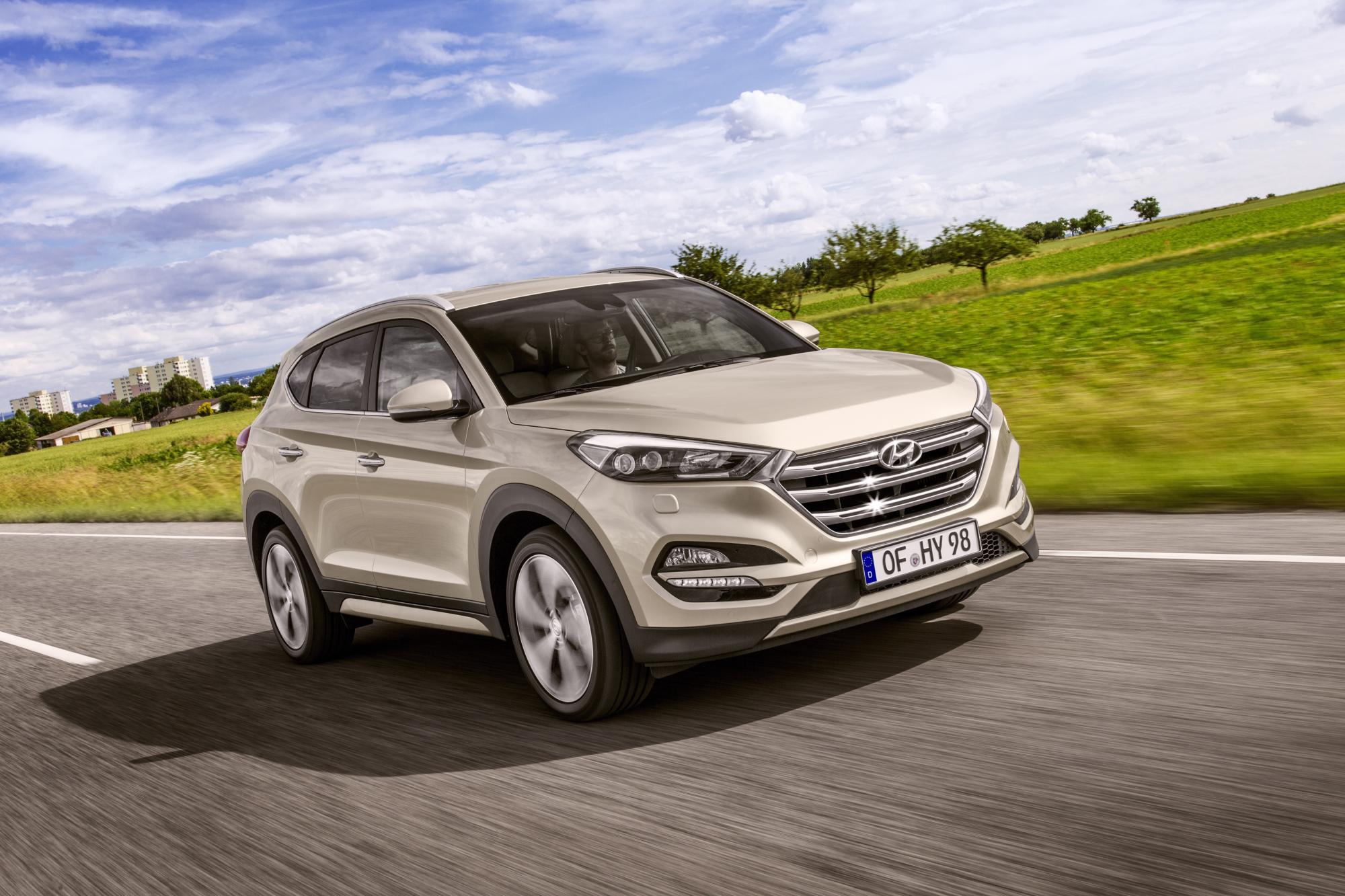
TUCSON ADDS 1.7-LITRE HIGH-POWER DIESEL WITH 7-SPEED DCT TO LINE-UP
- Hyundai’s best-selling Tucson compact SUV gains additional powertrain
- An efficient 1.7-litre diesel with seven-speed double clutch transmission (7DCT) and front wheel drive will be added to the existing five powertrains
- With a total of two petrol engines and now four diesel options the Tucson has one of the widest powertrain ranges it its class
High Wycombe, 1 March 2016 – Hyundai’s All New Tucson compact SUV, introduced to the European market in late 2015, will now offer a sixth powertrain option for the Tucson. An efficient 1.7-litre diesel with seven-speed double clutch transmission (7DCT) will be added to attract even more customers.
The All-New Tucson is Hyundai Motor’s fastest-selling European model with more than 115,000 cars ordered in Europe.The powertrain range of the compact SUV – already one of the widest in the segment – is now further extended with the addition of the dynamic 104 kW (141 PS) 1.7-litre turbo diesel engine. In combination with the efficient seven-speed double clutch transmission (7DCT) and front wheel drive it emits only 129 g of CO2 and consumes a moderate 4.9 litres of diesel per 100 kilometres (combined). The turbo diesel engine provides a maximum torque of 340 Nm over a wide rev range of 1,750 rpm to 2,500 rpm.
20% higher fuel efficiency
Hyundai Motor’s in-house developed 7DCT system offers a choice between fully automatic operation and sequential manual gear changes, selected with the gear lever for greater driver involvement. The 7DCT provides 20% higher fuel efficiency and lower CO2 emissions compared to a six-speed automatic transmission. For further efficiency the new powertrain also comes with the Integrated Stop & Go (ISG) system as standard, which is also available for the 1.7-litre (low power), and the 2.0-litre standard-power diesel engines as well as the 1.6-litre petrol engine.
Five star safety
The Tucson is one of the safest vehicles in its segment and received the maximum five-star Euro NCAP safety rating. It benefits from a solid body structure featuring 51% of ultra-high strength steel for improved torsional rigidity and impact resistance and a host of innovative passive and active safety features like Autonomous Emergency Braking with pedestrian recognition that stops the car automatically if a crash is predicted. The Tucson’s list of safety features also includes a Blind Spot Detection alerts the driver to approaching vehicles, Rear Cross Traffic Alert which scans a 180-degree area behind the vehicle alerting the driver if there is approaching cross-traffic and the Lane Keeping Assist System applying steering correction in case of unintended lane departure. Additionally the Active Hood cushions the impact shock in case of a frontal collision.
Made in Europe for Europe
Hyundai Motor manufactures 100% of Tucson models sold in European markets at its facility in the Czech Republic – a key part of its commitment to the region. Hyundai’s confidence in its European build quality means that every All-New Tucson will come with the company’s industry-leading Five Year Unlimited mileage Warranty as standard.

TECHNICAL SPECIFICATIONS
All-New Tucson 1.7-litre turbo diesel with 7DCT
Body and chassis
The All-New Tucson is a five-door compact SUV (C-SUV), with a high-strength steel construction body shell. Customers have the choice between two petrol and four diesel transversely-mounted engines driving the front wheels, or all four wheels via a six-speed manual or automatic as well as a seven-speed double clutch transmission (7DCT). Details for the 1.7-litre turbo diesel with 7DCT follow:
Engines / Petrol
| U2 1.7 CRDi (HIGH) 141 PS | 7DCT |
| Type | U2 1.7 CRDi four cylinders in line DOHC with 16-VALVE |
| Capacity | 1685 cc |
| Bore x stroke | 77.2 x 90 mm |
| Compression ratio | 15.7 |
| Power | (104 kW) 141 PS @ 4,000 rpm |
| Torque | 340 Nm @ 1,750~2,500 rpm |
| Drivetrain | 2WD |
| Maximum speed (km/h) | 185 |
| 0 to 100 km/h acceleration (seconds) | 11.5 |
| Fuel consumption urban | 5.4 |
| Fuel consumption extra urban | 4.7 |
| Fuel consumption combined | 4.9 |
| CO2 combined (g/km) | 129 |
